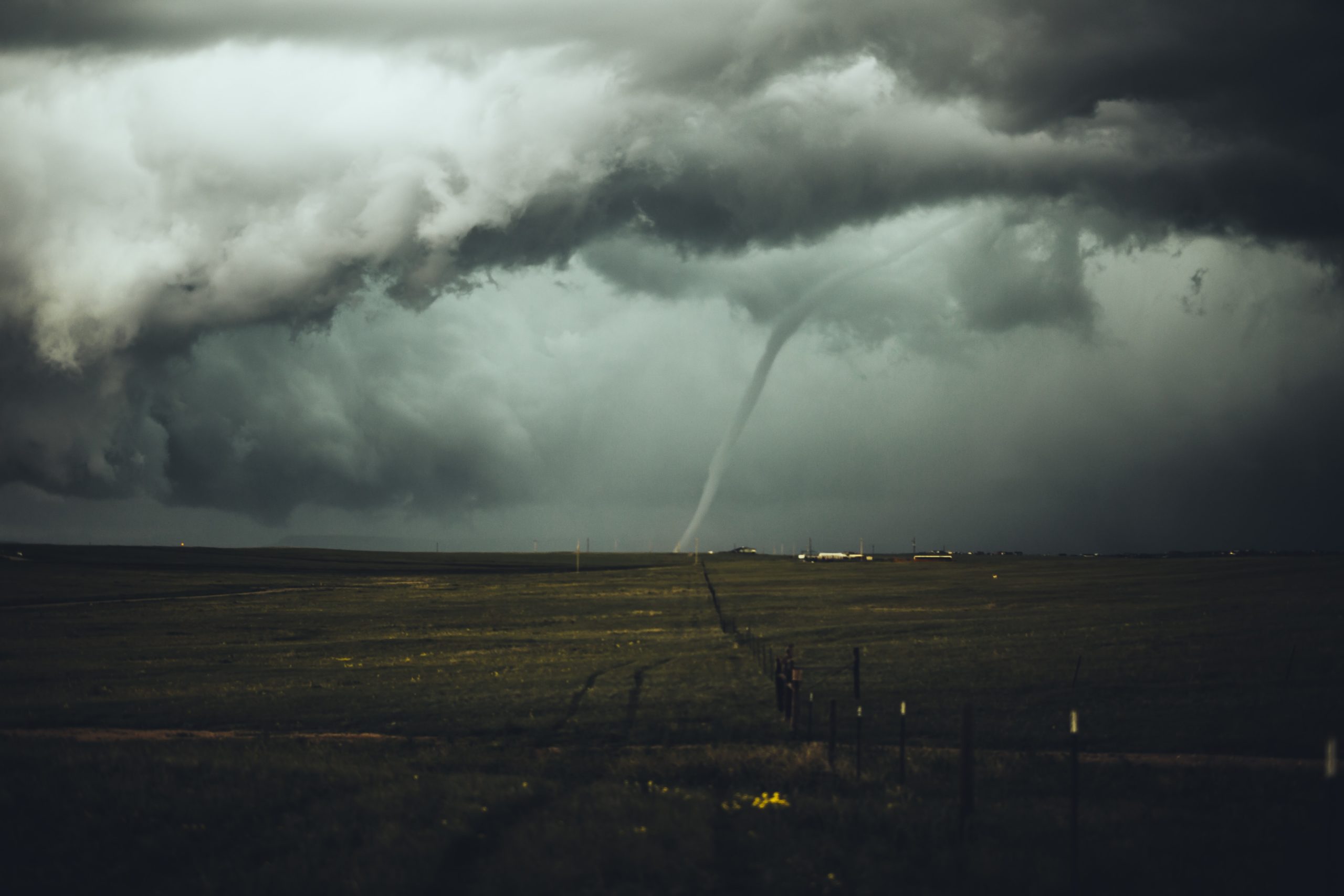Feature image: “Tornado Alley” by Nikolas Noonan on unsplash.com (https://unsplash.com/photos/n_3kdpSkrJo)
Paper: Tornadoes in Northern Eurasia: From the Middle Age to the Information Era
Authors: A. Chernokulsky, M. Kurgansky, I. Mokhov, A. Shikhov, I. Azhigov, E. Selezneva, D. Zakharchenko, B. Antonescu, and T. Kühne
When most people are asked to picture a tornado in their mind, they probably imagine the violent column of swirling wind and debris tearing through an open field in rural Kansas, as depicted in the classic 1939 film The Wizard of Oz. However, while the United States Midwest, so-called “Tornado Alley”, is the most well-known tornado hot-spot in the world, tornadoes touch down on every continent except Antarctica. A recent study by Chernokulsky and his team has established a comprehensive history of tornadoes that have occurred in an area commonly neglected in tornado research: northern Eurasia.
Even though the majority of tornado research focuses on the United States, deadly tornadoes can strike Eurasia, like in June 1984 killing 69 people in the Soviet Union. Accurate tornado forecasting and quick warning systems are essential in order to protect civilians, so it is important to understand historical tornado patterns in northern Eurasia to save lives in the future.
The recent study by Chernokulsky and co-authors compiled a wide variety of data sources to build the record of northern Eurasian tornadoes, including ancient Russian chronicles, news reports, satellite data, and weather station observations. By harnessing the power of social media, the researchers were able to explore over 1,000 possible tornadoes that were recorded on smartphone cameras. In many cases, they contacted the eyewitnesses to gather more information and confirm that the tornado was not just a very windy thunderstorm.
Through painstaking analysis of all of the data sources, the researchers put together a dataset of 2,879 tornadoes in northern Eurasia. The earliest account of a tornado they found was in the year 979! Unsurprisingly, the number of tornado events per year has increased through time, as population density has increased, which makes it more likely that someone will witness a tornado and report it, and tornado detection has been facilitated by modern technology. In the last decade, approximately 100 tornadoes have been reported in northern Eurasia per year. While most of the tornadoes are weak, almost every year between 1 and 3 tornadoes of intensity F3 or higher on the Fujita scale (a scale that measures a tornado’s intensity based on the damage it caused) occur. For reference, an F3 tornado has wind speeds estimated to be between 158 and 206 mph and causes “severe damage”.
The rarity of intense tornadoes and the low population density in most areas of northern Eurasia means that fatalities from tornadoes have been relatively low over the last two decades. On average there are 2.9 fatalities and 36.3 injuries due to tornadoes each year in northern Eurasia, compared to 79 deaths per year in the United States. Despite their lower occurrences than in the United States, tornadoes in northern Eurasia still pose a dangerous threat and are more common than public opinion might suggest.
In the paper’s conclusions, the authors point out the need for real-time tornado forecasting by national weather services in northern Eurasia and further refinement of their tornado climatology dataset. A better understanding of past tornadoes and improvements in modern tornado forecasting will hopefully lead to a reduced risk of damage and fatalities associated with these violent weather systems. This may become increasingly important over time, as one study (Chernokulsky et al. 2017) projects an increased probability of tornado formation in northern Eurasia due to climate change.
We’re Not in Kansas Anymore: Documenting Historical Tornadoes in Northern Eurasia by Alyssa Stansfield is licensed under a Creative Commons Attribution-ShareAlike 4.0 International License.

